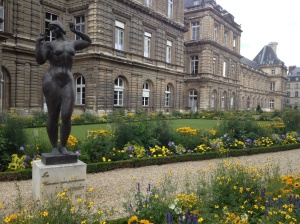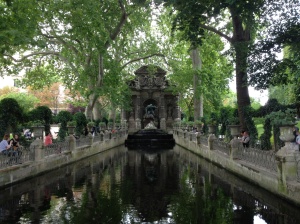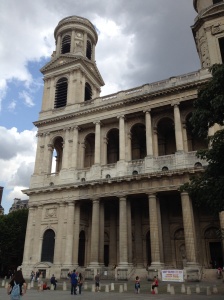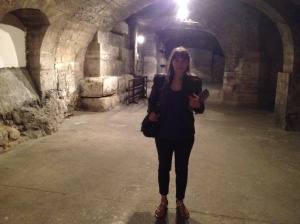It was in the summer of 1921 that I first visited Munich with my father, who had been there in the 90’s, like many another American, to continue his education. He knew the city intimately and he loved its people and their way of life. Association with Bavarian friends and institutions afforded him something of the understanding that broadens the vision and opens the mind to an appreciation of other peoples’ culture. Visiting my father’s old haunts and meeting the friends who had colored his youthful studies left me with a feeling of lasting warmth. This first visit and a half dozen subsequent ones gave me an appreciation of Munich’s gardens, her museums of science and industry, and her food and beer, all of which offered pleasant foils to long hours spent in art museums and galleries rivaling those of Berlin.
The Munich to which I returned on May 7th, 1945, a few days after its capture by Seventh Army, held few reminders for me. The familiar green-topped towers of the Frauenkirche looked down on almost complete destruction. There was no longer any individuality; the rubble, the debris, the almost complete ruin, had a dreadful encompassing similarity. The Residenz, formerly the Bavarian Royal Palace, incorporating four centuries of celebrated architecture with grandiose interiors and housing artistic treasures of great distinction, was badly burned and shattered. Floors had collapsed and works of art which had not been moved to safe-keeping were completely destroyed or in almost hopeless condition… The Nazi official buildings, notably the Führerbau and the Verwaltungsbau, had suffered less because of elaborate camoflage systems and adequately manned fire fighting equipment.
- Munich Residenz Antiquarium, 1944
- Munich Residenz Antiquarium, 2014
The Führerbau was on the list Rose Valland had given me of repositories in Germany containing French art. This was Hitler’s Munich headquarters. The connecting building was the Party Administration building, the Verwaltungsbau der NSDAP. It was here that Hitler had made his selecitons, and it was the interim storehouse for objects to be deposited in the mine at Alt Ausee pending their eventual placement in his prospective museum in Linz…
I recommended the use of the Führerbau and the Verwaltungsbau as a central collecting point for the works of art looted by the Nazis, and requested that an MFA & A officer be sent to take charge. There were no other buildings in Bavaria so well suited to housing the Goering Collection, the Rosenberg and Hitler confiscations, and other looted items. Lieutenant (USNR) Craig Smyth arrived in Munich shortly thereafter, on June 4th, to take charge of the buildings and the myriad details which attended such an operation (J. Rorimer, 216-219).
- The Führerbau (Survival, p. 172)
- Former Verwaltungsbau (Nazi Party HQ) in Munich became the MFA&A Collecting Point. Today it is the Central Institute for Art History (SSR 2014)
On my last morning in Munich, I was invited to visit the central administration of the Bavarian Department of State-owned Palaces, Gardens and Lakes which is located at Nymphenburg Palace, about 30 minutes from the center of the city. It was a real treat to tour the palace and learn more about role of the Administration of Bavarian Castles in saving works of art during World War II. I also got to see the Marstallmuseum, a fabulous collection of royal carriages and sleighs housed in the former stables building. After my visit, I noticed a photograph of the Residenz Carriage Museum and Stables in my grandfather’s book. In 1941, the objects were moved from the Residenz in the center of Munich to their current location at Nymphenburg Palace. The photo below shows the result of the 1944 air raids on the Residenz Carriage Museum and Stables. It’s a very good thing that these spectacular objects were safeguarded.
- Residenz Carriage Museum and Stables, destroyed in 1944 air raid (J. Rorimer, 172)
- Nymphenburg Palace
- King Ludwig II’s Estate Coach, Residenz Carriage Museum and Stables, 2014
For additional reading, see Robert Edsel’s blog on “The Establishment of the Munich Collecting Point”
http://www.monumentsmen.com/blog/tag/fuhrerbau/














